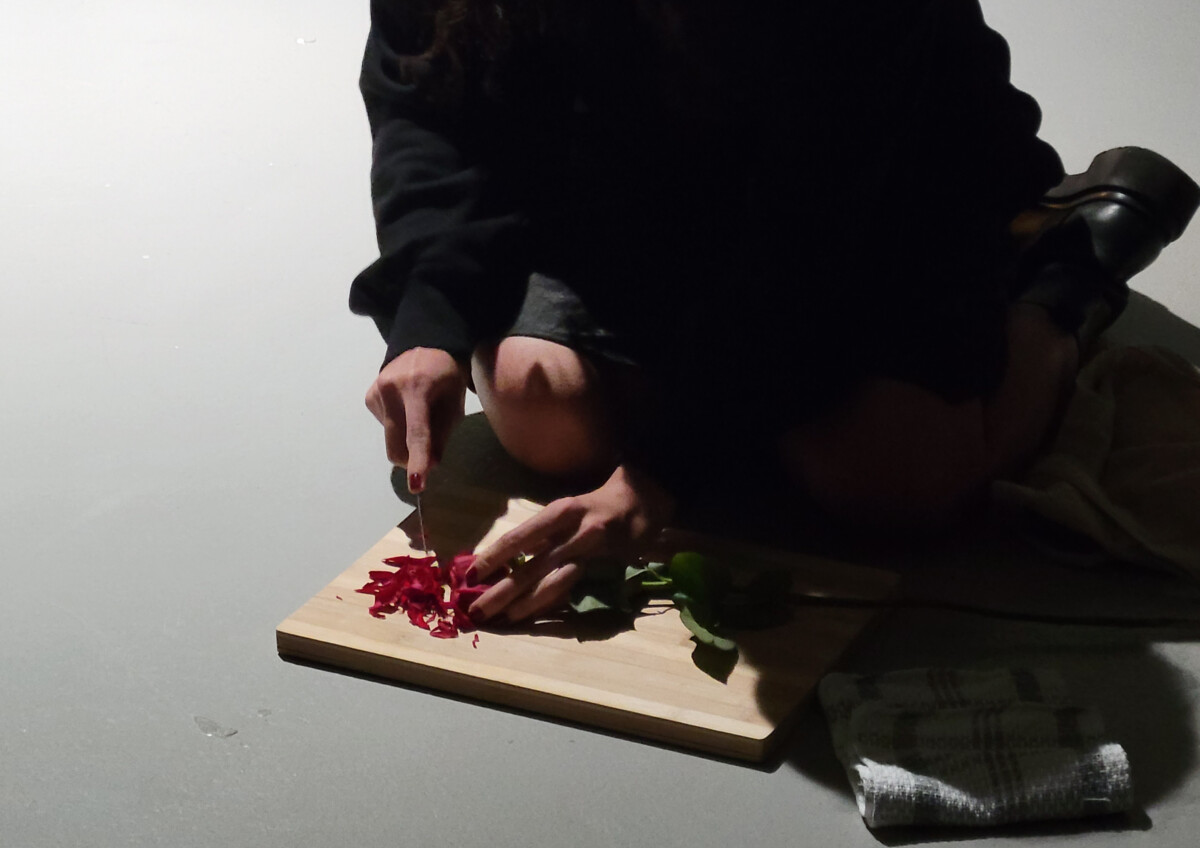Concordia’s VAV gallery hosted an evening of breathtaking student performances on Oct. 19.
Unyielding self-expression, vulnerability and trust emerged as through-lines between all of the night’s performances. Spoken word poetry, freestyle rap and stream-of-consciousness monologues revealed the artists’ emotional and spiritual depths. Each performance captured the artists’ respective grapplings with notions of selfhood, bittersweet memories of distant homelands, the intimate disappointments of failed relationships and the destruction necessary to rebuild one’s sense of identity.
“Fruit moi, fruit toi; ouvrir une pomegrenade avec les dents, les pieds, les reins,” recited artist Elyanne Desaulniers after her performance—her white satin blouse drenched in the pink and red juices of a pomegranate. Desaulniers’ sensual and violent untitled piece left the audience in quiet awe as she crawled and writhed on the floor—partially nude—beating and gnawing at the fruit until it was nothing but a scattered pile of rinds and seeds on the sticky gallery floor.
Her evocative performance spoke to the complexities of transgressive desire, hunger and yearning, which are entangled in the mythology of the pomegranate as the forbidden fruit of the underworld. Desaulniers’ display of erotic aggression was ultimately a celebration of exhibitionism—her dedicated photographer was very much a part of the performance—that sought to elevate and memorialise the messy and corporeal elements of sexuality.
Later, artist and writer Shaghayegh Naderolasli performed her meditative piece titled The Rose. Knelt in front of a small cutting board, Naderolasli recited fragments of memories and personal notes-to-self as she sliced the petals and stem of a red rose. As she worked, she remarked: “When I was walking from my apartment to the gallery, I realized that the rose was too red. The contrast led to comments, smiles, questionable looks. My rose kept me company through it.”
In the poem that accompanies the performance, the artist treats the rose as a living being that can listen, speak and watch. She—the rose—is an extension of Naderolasli herself. The rose in this work represents the artist’s understanding of her own femininity—one that has largely been constructed for her by external forces, such as the media and the culture that surrounds her.
In this performance, her actions mimic the preparation of culinary ingredients, drawing a visual connection between the iconic feminine symbol of the rose and the traditionally feminine domestic responsibility of preparing meals. Naderolasli is assertively responding to the expectations of conventional femininity through reworking the rose—taking it apart so that it could perhaps become something else that she can design on her own terms. Rather than discarding femininity, she is reinventing it, manipulating it and making it her own.
The artist grieves the loss of the original flower—its conventional beauty, the way it draws attention, its simplicity—while understanding the necessity of its sacrifice. Indeed, this powerful metaphor speaks to reclamation, agency and rebirth.
